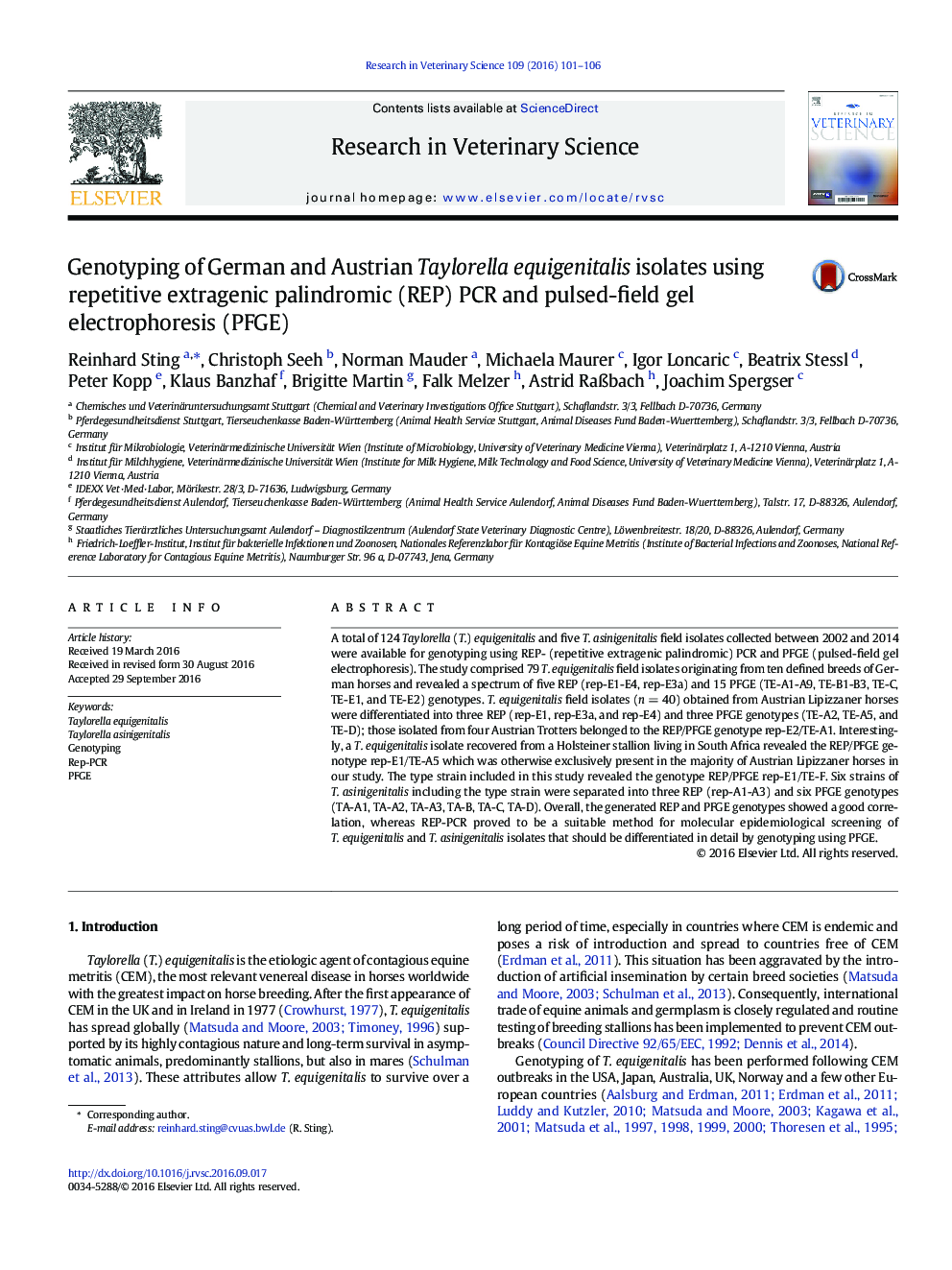| Article ID | Journal | Published Year | Pages | File Type |
|---|---|---|---|---|
| 5544057 | Research in Veterinary Science | 2016 | 6 Pages |
A total of 124 Taylorella (T.) equigenitalis and five T. asinigenitalis field isolates collected between 2002 and 2014 were available for genotyping using REP- (repetitive extragenic palindromic) PCR and PFGE (pulsed-field gel electrophoresis). The study comprised 79 T. equigenitalis field isolates originating from ten defined breeds of German horses and revealed a spectrum of five REP (rep-E1-E4, rep-E3a) and 15 PFGE (TE-A1-A9, TE-B1-B3, TE-C, TE-E1, and TE-E2) genotypes. T. equigenitalis field isolates (n = 40) obtained from Austrian Lipizzaner horses were differentiated into three REP (rep-E1, rep-E3a, and rep-E4) and three PFGE genotypes (TE-A2, TE-A5, and TE-D); those isolated from four Austrian Trotters belonged to the REP/PFGE genotype rep-E2/TE-A1. Interestingly, a T. equigenitalis isolate recovered from a Holsteiner stallion living in South Africa revealed the REP/PFGE genotype rep-E1/TE-A5 which was otherwise exclusively present in the majority of Austrian Lipizzaner horses in our study. The type strain included in this study revealed the genotype REP/PFGE rep-E1/TE-F. Six strains of T. asinigenitalis including the type strain were separated into three REP (rep-A1-A3) and six PFGE genotypes (TA-A1, TA-A2, TA-A3, TA-B, TA-C, TA-D). Overall, the generated REP and PFGE genotypes showed a good correlation, whereas REP-PCR proved to be a suitable method for molecular epidemiological screening of T. equigenitalis and T. asinigenitalis isolates that should be differentiated in detail by genotyping using PFGE.
